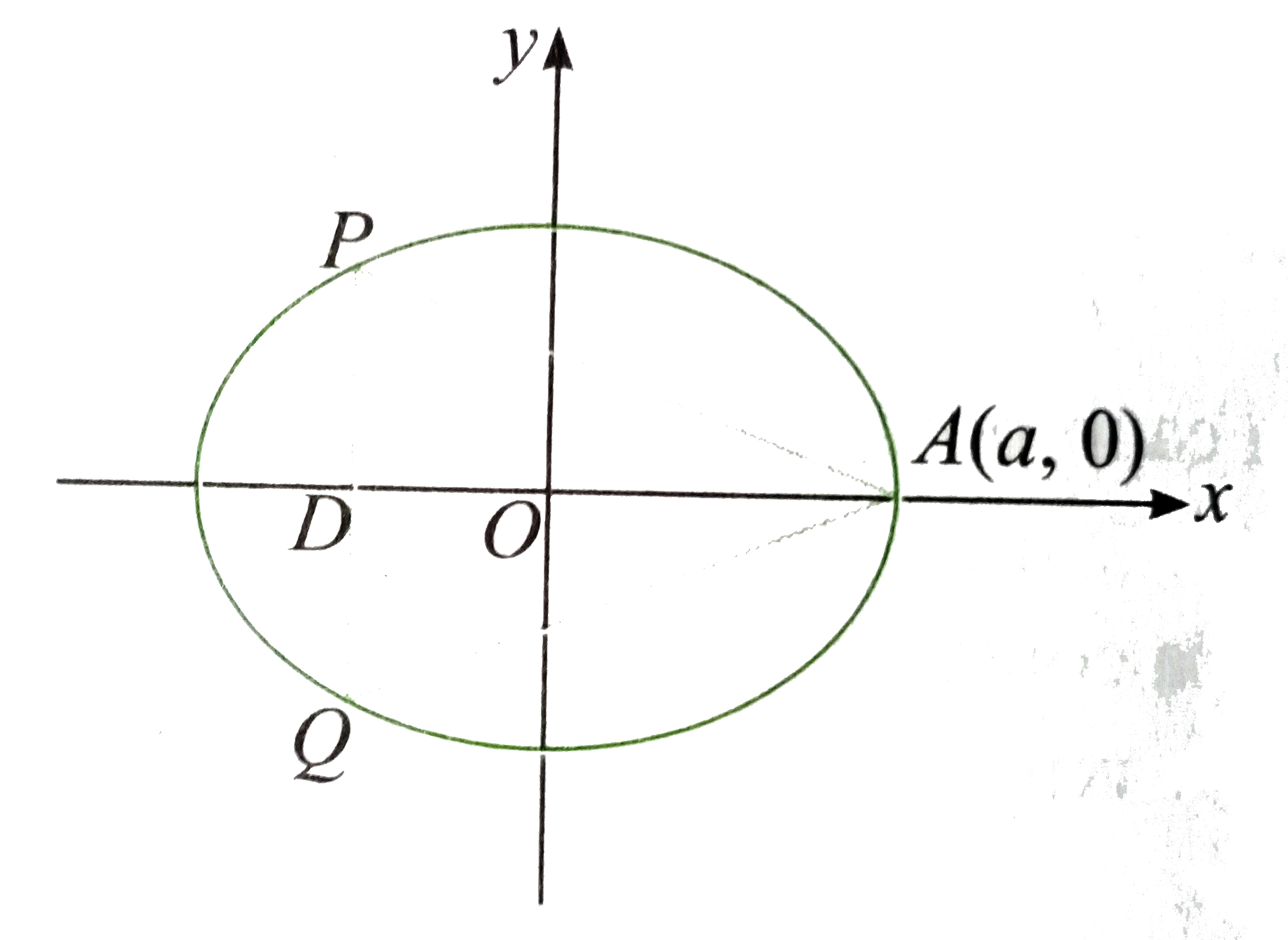Find the area of the greatest isosceles triangle that can be inscribed in the ellipse (x2a2)+(y2b2)=1 having its vertex coincident with one extremity of the major axis.Solution in Tamil
Let APQ be the isoceles triangle inscribed in the ellipse (x2/a2)+(y2/b2)=1 with one vertex A at the extermity (a,0) of the major axis. If the coordinates of P are (acosθ,−bsinθ) then those of Q will be (acosθb−sinθ),
So, area of ΔAPQ. is given by
Δ=12PQ⋅AD
=PD⋅AD
=PD(OA+OD)
=bsinθ(a−acosθ)
=12ab(2sinθ−sin2θ),0<θ≤π

∴dΔΔθ=ab(cosθ−cos2θ)
and
d2Δdθ2=ab(−sinθ+2sin2θ)
For maximum or minimum of Δ.
dΔdθ=0
orcosθ−cos2θ=0
or2cos2θ−cosθ−1=0
or (2cosθ+1)(cosθ−1)=0
orcosθ=12 (∴cosθ≠1asθ≠0)
or θ=2π3
Whern θ=2π/3, we have
d2Δdθ2=−12(3√3)ab,(−ve)
Therfore the area is maximum when θ=2π/3
Therefore, maximum area
Δ=12ab[2sin.2π3−sin.4π3]
=14(3√3)ab
Similar Questions
Find the maximum area of an isosceles triangle inscribed in the ellipse x2a2+y2b2=1 with its vertex at one end of the major axis.
09:45View SolutionFind the maximum area of an isosceles triangle inścribed in the ellipse x225+y216==1, with its vertex atone end of the major axis.
06:10View SolutionFind the area of the greatest isosceles triangle that can be inscribed in the ellipse (x2a2)+(y2b2)=1 having its vertex coincident with one extremity of the major axis.
10:24View SolutionFind the maximum area of an isosceles triangle inscribed in the ellipse x2a2+y2b2=1 with its vertex at one end of the major axis.
10:23View SolutionFind the maximum area of an isosceles triangle inscribed in the ellipse x2a2+y2b2=1 with its vertex at one end of the major axis.
09:45View SolutionAn isosceles triangle that can be inscribed in an ellipse x2a2+y2b2=1 having its vertex coincident with one extremity of major axis has the maximum area equal to m√n4ab (m,n are prime numbers) then m2−n3=
11:54View SolutionFind the maximum area of an isosceles triangle inscribed in the ellipse x2a2+y2b2=1with its vertex at one end of the major axis.
08:55View SolutionFind the maximum area of an isosceles triangle inscribed in the ellipse x2a2+y2b2=1 with its vertex at one end of the major axis.
07:43View Solution

